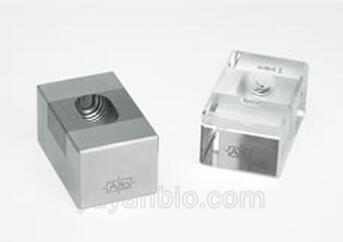NFAT and Hypertrophy of the heart (Transcription in the broken heart)

Hypertrophy associated with both hypertension and obstruction to ventricular outflow leads to pathologic cardiac growth and it is associated with increase morbidity and mortality. Symptomatic ventricular disease takes a growing toll on the health of nations. As other cardiovascular diseases such as stroke and myocardial infraction are in decline as causes of mortality, the heart failure problem becomes increasingly urgent. Congenital heart defects occur in 1% of live births and fetal heart malformations are implicated in many pregnancies that end in still-birth or spontaneous abortion. The current paradigm suggests that the heart adapts to excess of hemodynamic loading by compensatory hypertrophy, which under condition of persistent stress, over time evolves into dysfunction and myocardial failure. There is considerable evidence that direct effects of increased mechanical stress are sensed within the ventricular wall and that signals critical for the generation of growth responses. Despite compelling statistics we still do not understand biochemically why heart defects are so prevalent. A single transcriptional regulator initially associated with the activation of the T-cells (NFATc4) has been shown to link genetic and environmental causes of one class of congenital heart disorders – birth defects involving valve and septum formation. Within the endocardium, specific inductive events appear to activate NF-ATc: it is localized to the nucleus only in endocardial cells that are adjacent to the interface with the cardiac jelly and myocardium, which are thought to give the inductive stimulus to the valve primordia. Treatment with FK506, a specific calcineurin inhibitor, prevents nuclear localization of NF-ATc4. Activated CaMK stimulates calcineurin, which than acts through NF-ATc4 in association with GATA4, to induce hypertrophy. A model for the proposed role of calreticulin in the regulation of cardiac development requires a myogenic signal from extracellular space to activate the production of IP3 that results in the release of Ca2+ from ER under the regulation of calreticulin (CRT). Increased intracellular Ca2+ binds to calmodulin (CaM) and activates calcineurin (CaN). CaN dephosphorylates NF-ATc4 that translocates to the nucleus. In the nucleus NF-AT forms complexes with the GATA-4 and other transcription factors leading to activation of transcription of genes (ANF, a-actin, b-mysin, TNFa, ET-1, Adss1 etc) essential for cardiac development. For a comprehensive list of myocyte genes regulated at transcriptional level see Molecular and Cellular Biology of Cardiac Hypertrophy and Failure by Hunter et al., in Molecular Basis of Cardiovascular Disease ed by Chien KR, pp 211-250)
Contributor:
REFERENCES: Antos CL, McKinsey TA, Frey N, Kutschke W, McAnally J, Shelton JM, Richardson JA, Hill JA, Olson EN. Activated glycogen synthase-3 beta suppresses cardiac hypertrophy in vivo. Proc Natl Acad Sci U S A. 2002 Jan 22;99(2):907-12. Cook SA, Matsui T, Li L, Rosenzweig A. Transcriptional effects of chronic Akt activation in the heart. J Biol Chem. 2002 Jun 21;277(25):22528-33. Crabtree GR, Olson EN. NFAT signaling: choreographing the social lives of cells. Cell. 2002 Apr;109 Suppl:S67-79. Review. de la Pompa JL, et al (1998) Role of the NF-ATc transcription factor in morphogenesis of cardiac valves and septum. Nature. 392(6672):182-6 Haq S, Choukroun G, Kang ZB, Ranu H, Matsui T, Rosenzweig A, Molkentin JD, Alessandrini A, Woodgett J, Hajjar R, Michael A, Force T. Glycogen synthase kinase-3beta is a negative regulator of cardiomyocyte hypertrophy. J Cell Biol. 2000 Oct 2;151(1):117-30. Ichida M. and Finkel T. (2001) Ras regulates NFAT3 activity in cardiac myocytes. J Biol Chem. 276(5):3524-30. Mesaeli N, et al. (1999) Calreticulin is essential for cardiac development. J Cell Biol. 144(5):857-68. Molkentin JD, Lu JR, Antos CL, Markham B, Richardson J, Robbins J, Grant SR, Olson EN. A calcineurin-dependent transcriptional pathway for cardiac hypertrophy. Cell. 1998 Apr 17;93(2):215-28. Morimoto T et al., (2001) Calcineurin-GATA4 pathway is involved in beta-adrenergic agonist-responsive endothelin-1 transcription in cardiac myocytes. J Biol Chem. 276(37):34983-9. Musaro A, McCullagh KJ, Naya FJ, Olson EN, Rosenthal N. IGF-1 induces skeletal myocyte hypertrophy through calcineurin in association with GATA-2 and NF-ATc1. Nature. 1999 Aug 5;400(6744):581-5. Nolan GP. Cardiac development. Transcription and the broken heart. Nature. 1998 Mar 12;392(6672):129-30. No abstract available. Passier R. et al., (2000)CaM kinase signaling induces cardiac hypertrophy and activates the MEF2 transcription factor in vivo. J Clin Invest. 105(10):1395-406. Ranger AM, et al (1998) The transcription factor NF-ATc is essential for cardiac valve formation. Nature 392(6672):186-90. Taigen T, et al., (2000) Targeted inhibition of calcineurin prevents agonist-induced cardiomyocyte hypertrophy. Proc Natl Acad Sci U S A. 97(3):1196-201. Xia Y et al., (2000) Electrical stimulation of neonatal cardiac myocytes activates the NFAT3 and GATA4 pathways and up-regulates the adenylosuccinate synthetase 1 gene. J Biol Chem. 275(3):1855-63. Yang T, Davis RJ, Chow CW. Requirement of two NFATc4 transactivation domains for CBP potentiation. J Biol Chem. 2001 Oct 26;276(43):39569-76.





















